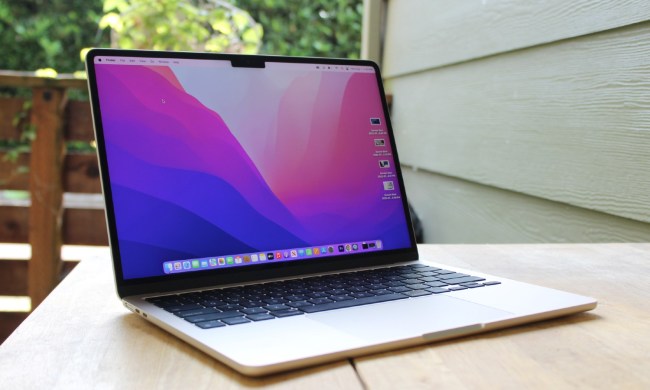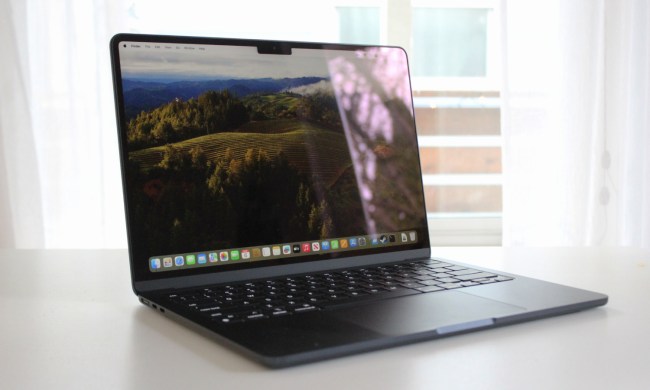The verdict is in. Apple’s “Let us loop you in” event was underwhelming. To be fair to Apple, it’s unusual that we’re getting a new iPhone and iPad at this event, and there were some interesting new features announced, such as TrueTone. But it’s not hard to see why most people are responding to the event with a bored shrug.
If you’re a fan of the Mac, though, you’re probably a bit more emotional. Another event has passed, and the Mac continues to be ignored. No one was expecting to see anything new today, but that’s the point. Apple’s Macs — the MacBook Air and Pro, in particular — are becoming outdated, bloated, overpriced machines, and it’s a damned shame.
Apple’s computers need to go on a diet
With the exception of the mediocre MacBook, which was announced last year, all Apple laptops are over the hill. The current MacBook Pro 13-inch received a very minor touchup in 2013, losing a bit of weight and a few tenths of an inch compared to the 2012 model. Otherwise, both the 13- and 15-inch versions of the Pro have a chassis that dates back to the 2012 announcement of the Retina display.
Related Offer: The iPad Pro. Now in two sizes.
The Air’s last redesign was — get this — in late 2010. It was bizarre to hear Apple slam Windows PCs over the number that are more than five years old, when Apple itself sells a brand new laptop that last saw a major update nearly six years ago.
They look and feel like yesterday’s news – because that’s exactly what they are.
Apple is taking the “if it ain’t broke, don’t fix it” approach. And that’s okay. The computer is a mature product, and the important elements of design are common. A good display, keyboard, and touchpad are crucial. And both the MacBook Air and Pro were at the leading edge of their categories when last redesigned.
But six years is a very long time. The current Air is behind its competitors in every category. It’s more expensive than an entry-level Asus Zenbook UX305CA or Dell XPS 13, yet behind in looks, size, weight, keyboard quality, and display resolution. The Air might last longer on a charge — we haven’t reviewed the Air as recently as those competitors — but that’s its only possible edge. Judged on how it stacks up against competitors, and on overall value, the MacBook Air is the worst device currently sold by Apple.
The Pro is almost as disappointing. It has a competitive display, and the massive battery Apple stuffs inside both the 13-inch and 15-inch models gives the Pro an edge in battery life. But both systems are larger and heavier than competitors. The 13-inch Pro feels like a brick next to a Dell XPS 13. And while the display is fine, most Windows laptops of similar price offer similar image quality and higher resolution, not to mention touchscreens.
Put simply, Apple’s MacBook Air and Pro are too heavy, too thick, and have outdated displays. They look and feel like yesterday’s news – because that’s exactly what they are.
Rotten to the core
The design of Apple’s MacBooks may be over the hill, but it’s the least of the Mac’s troubles. The real problems can be found inside.
Related Offer: Buy a Samsung G7 and receive a FREE Gear VR at AT&T
Apple’s MacBook Pro 15 is the most serious offender. It starts at $2,000. That nets you the Intel Core i7-4770HQ, a processor launched in the third quarter of 2014. Intel’s newest 6th-generation Core processor is not available, even as an option. That means you’re behind on performance and efficiency compared to a modern Windows 10 competitor, such as the Dell XPS 15 or Asus Zenbook UX501. And there’s more bad news! While competitors tend to offer discrete graphics as a standard feature, or as an option that comes in below $2,000, the MacBook Pro 15 is stuck with an Intel Iris Pro 5200 IGP. Which, since it’s part of the Core i7 chip, is outdated. If you spend an extra $500 to fix that flaw you end up with AMD’s Radeon M370X, a low-tier discrete GPU that can’t keep up with the Nvidia GTX 960M and 950M hardware common in other 15-inch notebooks.

The MacBook Pro and Air are in slightly better shape, since they at least have Intel’s 5th-generation Core hardware on board. Yet they’re still behind: The competition has moved on to 6th-gen parts.
To Apple’s credit, the MacBook Pro 13-inch uses a version of Intel’s 5th-gen mobile hardware that is more powerful than most, so it’s still competitive with Windows ultrabooks. But that more powerful chip is the reason the Pro 13 is overweight. Efficiency is important. Apple’s decision to stick with older hardware means the Pro chugs more juice to deliver the same effort. That means a bigger battery is needed, and a beefier power supply, and more aggressive cooling.
Time has also eroded traditional Mac advantages like hard drive performance and display quality. Most top-tier Windows notebooks now use solid state hard drives that connect over the PCI Express bus, so they’re in the same league as Apple’s hardware. And Windows alternatives boast higher-resolution displays with touchscreens.
It’s not just about MacBook
I’ve rambled on about Apple’s MacBook line-up because it is, I think, key to Apple’s identity. But there is trouble elsewhere. The Mac Mini still uses 4th-generation Intel Core hardware, which makes it slow for its $500 MSRP. And Apple has caught flak recently over bugs in OS X and its native software. ITunes remains the favorite whipping boy, especially now that Apple Music runs through it, but Safari can be a mess at times, and native apps like Notes aren’t of much use.
The iMac is the only bright spot. The 27-inch model’s 5K display is excellent, and it’s well priced given that Dell’s UP2715K monitor is about $1,500 on its own, without a PC attached. The 4K display on the 21.5-inch model is equally unique. And both models have strong hardware that’s been updated to the latest Intel has to offer.
Wilted fruit
It’s easy to imagine why Apple may be neglecting the Mac. It makes up only about a tenth of the company’s revenue, putting it far behind the money-making iOS lineup. And there’s little chance of the Mac ever becoming the dominant force in its market, even if Apple stayed on top of current hardware and introduced wonderful yearly updates to OS X.
Apple is content to let its hardware languish while it continues to sell systems based on its brand.
Still, the trend is disappointing. The MacBook Air and Pro were once at the pinnacle of modern PC design, beating competitors in every area and debuting new technology far ahead of anyone else. The only headline feature Apple has brought to the Mac since Retina is USB Type-C, and the competition has already caught up, while pairing its hardware with more ports than the 12-inch MacBook.
Apple could do more. A 13-inch MacBook Pro with fast discrete graphics and innovative cooling that keeps weight and size down could rock the PC world. A new OLED display could do the same – if it had been announced alongside of the new iPhone SE. OLED will show up in Windows notebooks next month.
Instead, Apple is content to let its hardware languish while it continues to sell systems based on its brand. Many people don’t realize that the Mac has fallen behind, and still think that the Air is especially lightweight and the Pro particularly quick. The Mac can coast on this goodwill for a time. But to fans paying attention, the message is clear: Apple doesn’t care about you anymore.


